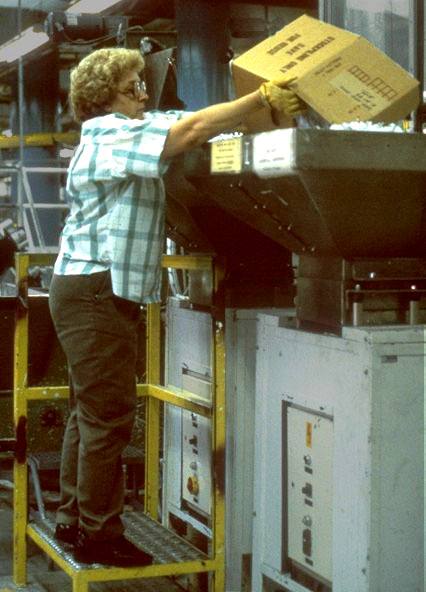 |
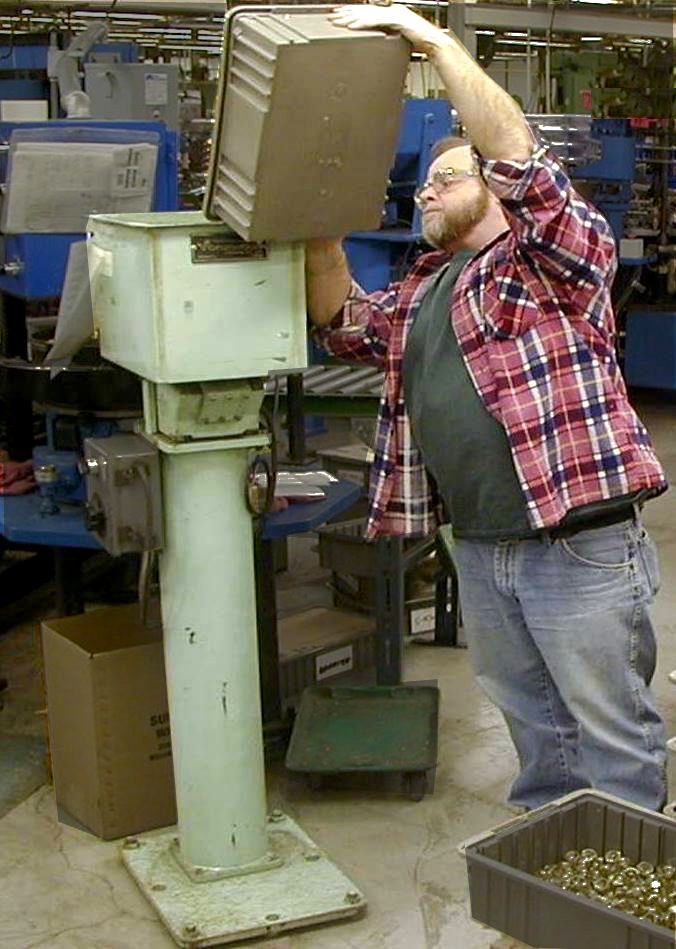 |
| Overhead reach | |
Background
Parts hoppers provide an efficient technique for feeding materials into machines and assembly operations. However, the hoppers are typically located in elevated positions (in order to use gravity to feed the materials where needed). These high positions can make them difficult to load.
Bulk materials in process industries are often handled in hoppers. These are usually loaded mechanically, but in some instances are done by hand. Examples include food processing, chemical plants, and pharmaceutical operations.
Note that hoppers could be more extensively in manual assembly as a technique to reduce reaches for assemblers. Hoppers provide a way to replace containers of parts at the workstation with small chutes that take less space and thus feed parts closer to the point of use. But to optimize the use of hoppers, it is necessary to improve the loading task.
Objectives
Eliminate reaching. Ideally, eliminate the need to climb up platform steps repeatedly.
Ideas and Options
Steps and platforms
 |
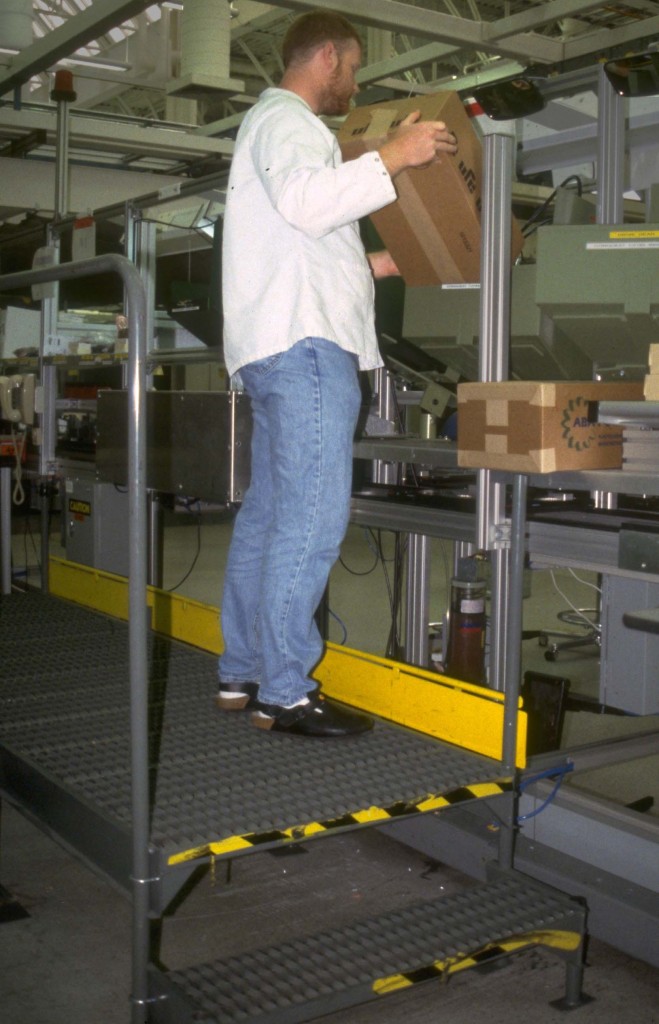 |
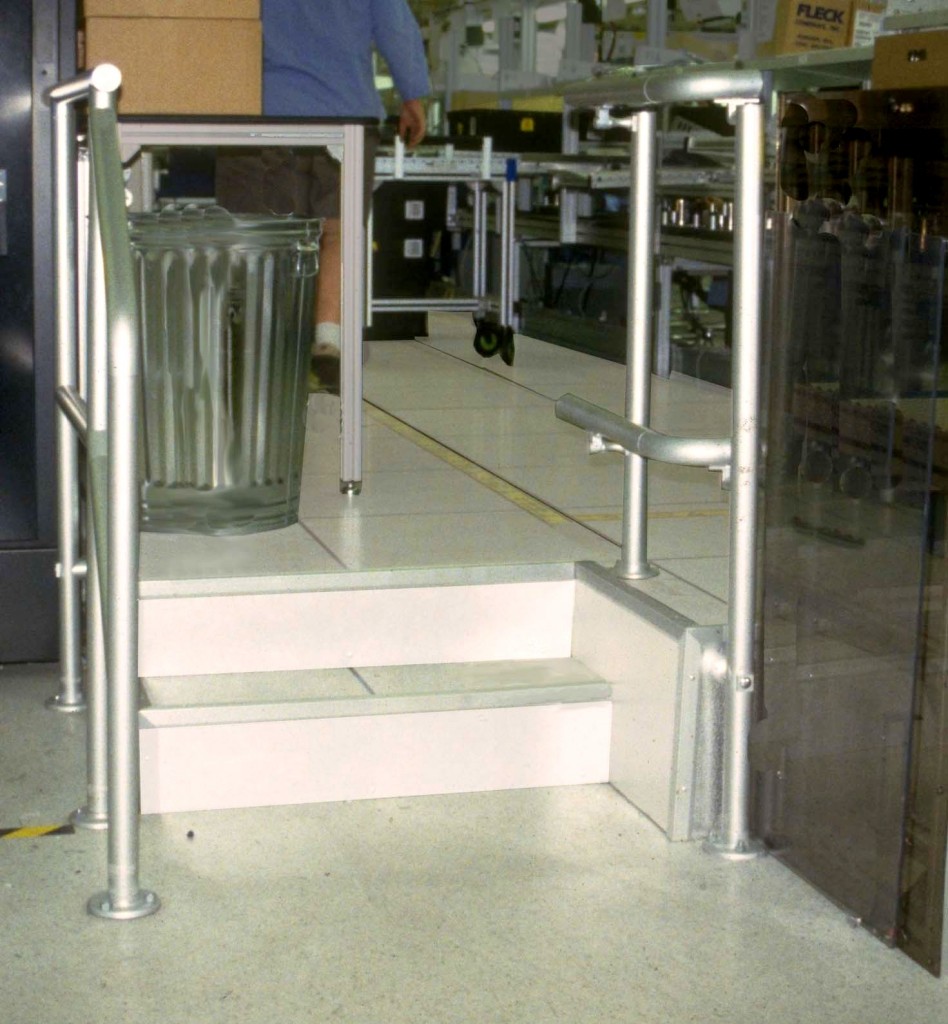 |
| Before | First try: Steps and narrow platform | After: Large area platform |
The photo sequence above shows the original loading system that required lifting boxes overhead, sometimes with fairly heavy contents.
The first attempt to improve the loading was to install a standard narrow platform. However, this required employees to step up and down repetitively, plus lengthened loading time since carts could no longer be used to bring the boxes to the point of use.
Ultimately, the solution was to install a large area platform the enabled employees to work most of their time at that level, without needing to use the steps. Conveyors were also installed to bring boxes to the platforms, and then carts were used to transfer the boxes from the conveyor to the individual chutes. Equipment heights were set so that the boxes could be slid without needing to be lifted — from the conveyor to the cart to the top edge of the hopper. (See also platforms.)
Support surface
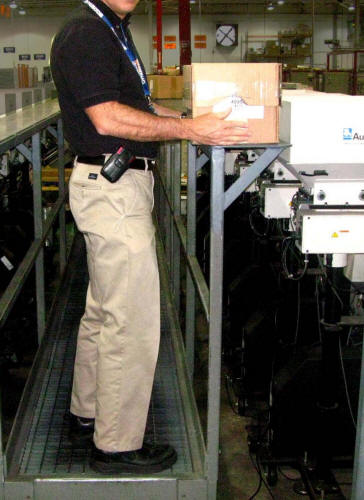 |
 |
| Surface to support box | Height differential to help tip, not lift |
It can be helpful to install a support surface directly in front of the hopper to hold the weight of the box. The height differential between the surface and top of hopper should be set to facilitate tipping, rather than needing to lift.
Lifter-transporter
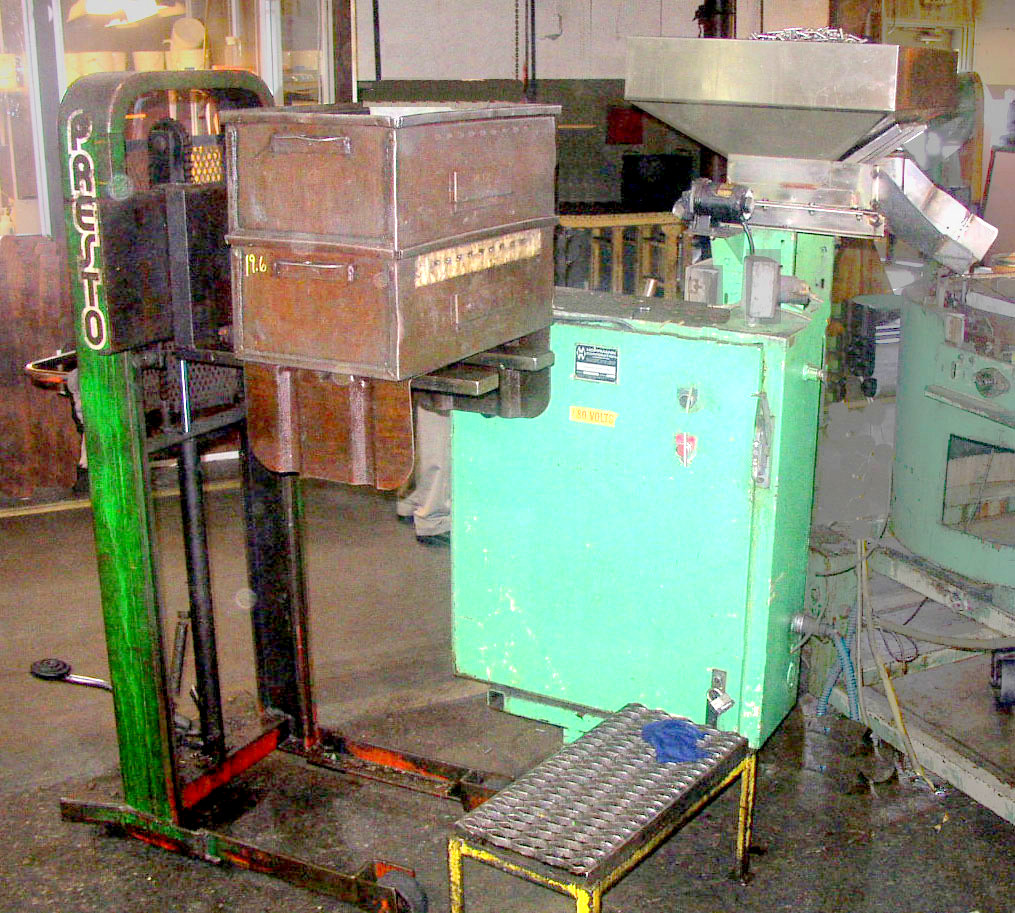 |
| Lifter-transporter holds containers |
In the above photo, a lifter-transporter is used to raise the containers of parts and position them close to the hopper. The employee needs to use the step stand, but does not need to hold these heavy metal parts when doing so.
Dumpers
 |
| Integrated dumper |
It is common to use dumper systems to load heavy materials into hoppers. They can be integrated into the equipment or added as stand-alone devices.
Inclined conveyor
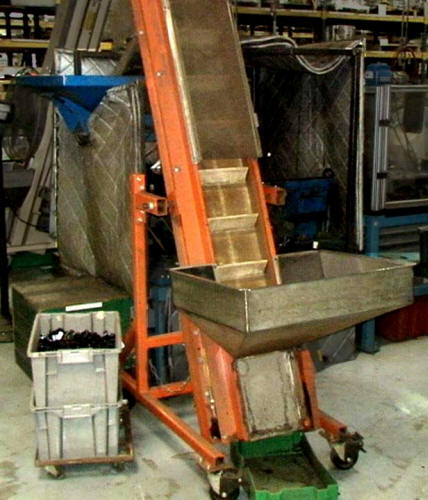 |
| Inclined conveyor with low hopper |
Another common approach is to use incline conveyors. They can in essence lower the hopper from overhead to a good working height at floor level.
Hoist dumper
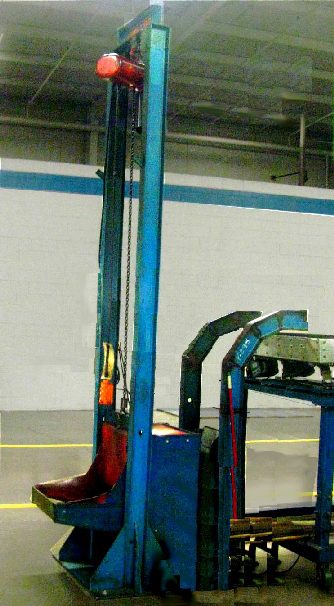 |
 |
| Hoist-based dumper — Hopper in low position for loading | View from different angle — Hopper in high position for dumping |
This hoist-based dumper was fabricated in-house at relatively low cost. A frame supports the hoist and stabilizes the hopper. A vibrator is attached to the chute to help the flow of this particular material when dumping. See more details on this device.
Mini-dumper
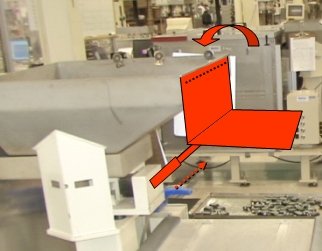 |
| Simple homemade mini-dumper |
The author has recommended using small mini-dumpers, but is not aware of any locations that have implemented the concept (despite initial positive reactions). The idea is to attach an L-shaped shelf with a hinge to the top edge of the hopper. The employee would simply place a tote on the shelf and push up.
This approach would have three main advantages: (1) low cost, (2) eliminate the need to stabilize the tote when it is dumped, and (3) reduce the reach by enabling the shelf and tote to be pushed from the bottom. Alternatively, a powered cylinder could be used, as well as a lever device.
Manipulator
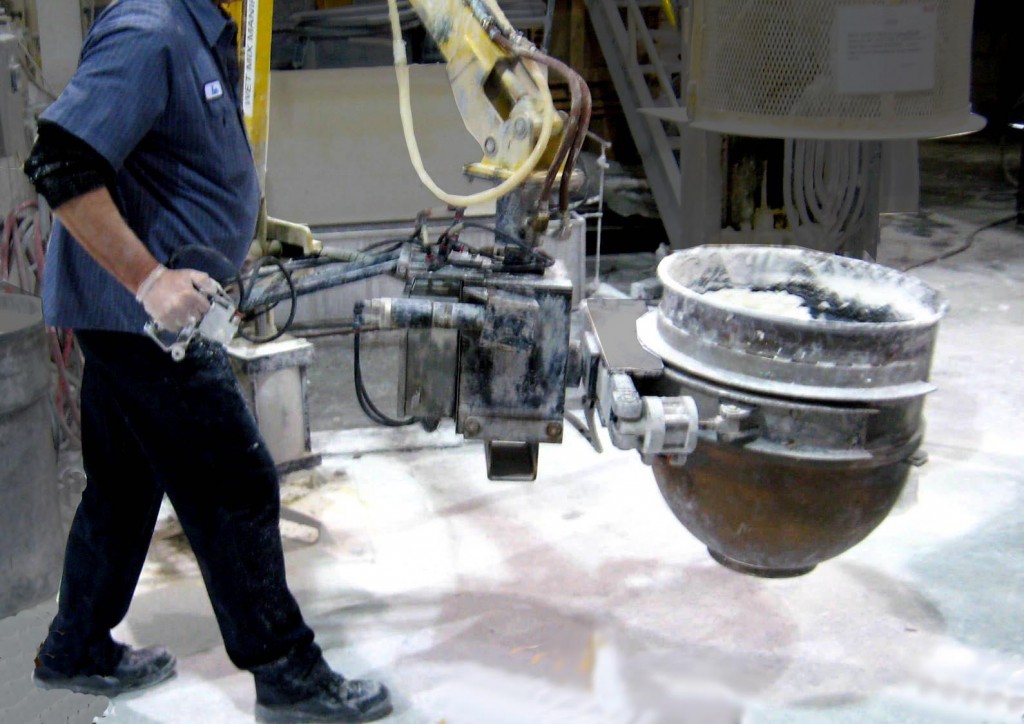 Vacuum loadersManipulator arms can work well, especially in high volume operations with multiple hoppers adjacent in the same area.
Vacuum loadersManipulator arms can work well, especially in high volume operations with multiple hoppers adjacent in the same area.
 |
 |
| Vacuum systems for powders and lightweight parts (right: www.nex-flow.com) | |
For loading powders and small lightweight parts, vacuum systems are common. This technique is common for powders, but less so for small parts, even though vacuum can work quite well for this application
Semi-automated system
 |
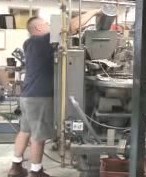 |
| Before: Manual load of hoppers — low bend, high reach, extra time | |
In this example, the “before” situation is a common scenario throughout industry. The employee bends down to scoop up parts, walks to hopper, and reaches up to dump the scoop. The strain on the back and shoulders should be obvious. Less obvious is the wasted time, which in some situations is at the expense of production, i.e., when machines must be halted in order to add more parts into the hopper.
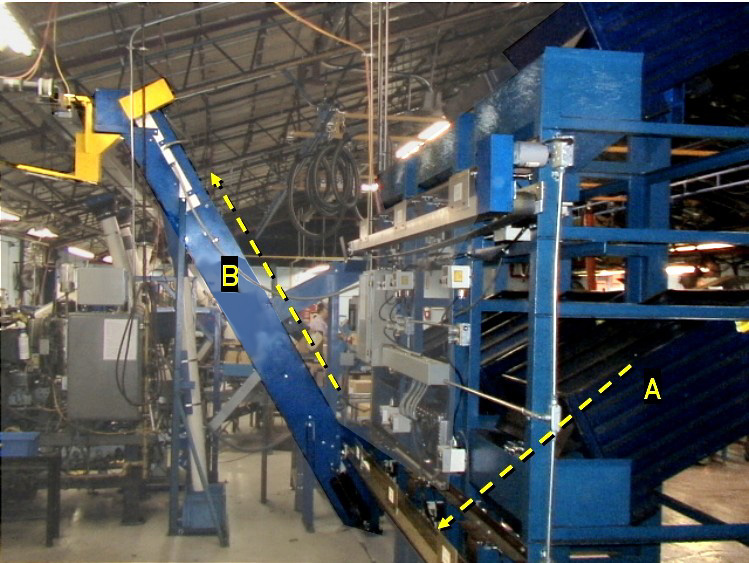 |
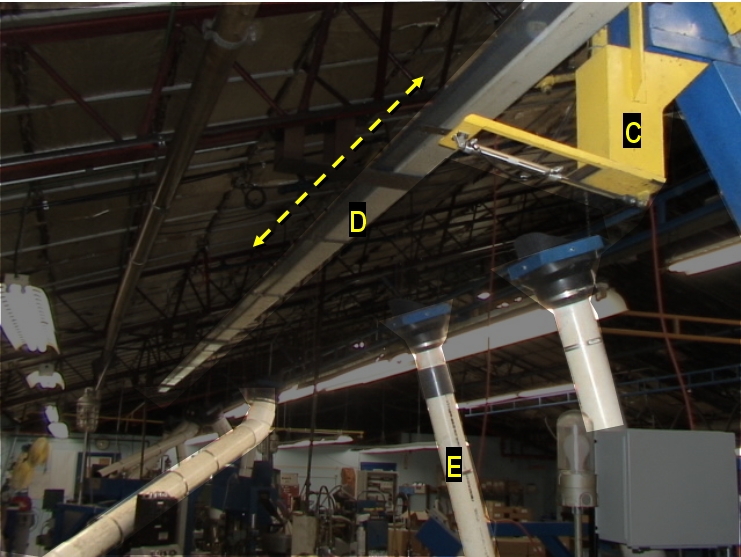 |
| Parts drop from tubs into inclined conveyor | Shuttle on rail drops parts into chutes to machines |
The system shown above is innovative and effective:
- Machine operators call for parts with a push of a button, which allows the parts to drop from large tubs (A) onto a horizontal belt conveyor.
- An inclined conveyor (B) raises the parts up to drop them into a shuttle loader (C).
- The shuttle loader runs (surprisingly quickly) along an overhead rail (D) and drops the parts into chutes (E) that lead to machines.
This system eliminated much wasted time as well as reduced wear and tear on employees. Furthermore, it cleaned up a significant amount of floor space, which provided room adjacent to the machines for the packing, as decribed above. Total costs and benefits benefits of this system are documented in Ergonomics Cost-Benefits in a Small Manufacturing Plant.
